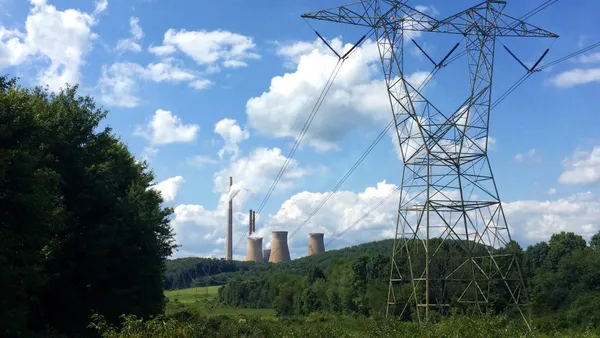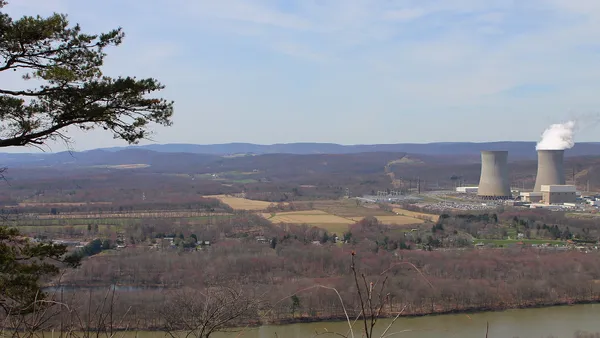Dive Brief:
- CenterPoint Energy has announced a carbon policy to cut its emissions through energy efficiency programs, reductions in natural gas suppliers' methane emissions, and alternative fuel programs and pilots. But the plan is silent for now on the fate of one source of the company's emissions: about 1 GW of coal-fired power capacity in Indiana.
- The policy aims to reduce CenterPoint's operational emissions by 70% by 2035 and its emissions from natural gas usage in heating, appliances and equipment within residential and commercial sectors by 20% to 30% by 2040, the company announced Monday.
- The Houston-based company, which serves 7 million electric and natural gas customers in eight states, recently took steps to cut its debt by selling its natural gas retail business for $400 million and planning to sell two gas distribution and transmission pipeline contractors for $850 million.
Dive Insight:
CenterPoint acquired the coal power plants as a result of a $6 billion merger with Vectren Corp., a utility serving 140,000 electric customers in southwest Indiana, as well as 1.2 million natural gas customers in Indiana and Ohio.
Vectren had previously announced it would retire all of its coal-fired capacity by the end of 2023 and replace those units with a $900 million, 850-MW natural gas-fired plant, with the exception of the 270-MW Unit 3 at the FB Culley plant. But Indiana regulators rejected the new gas plant in 2019, while approving new environmental controls for Culley Unit 3.
When asked by Utility Dive if the company is considering retiring any of its coal plants early as part of the emissions reduction strategy, a CenterPoint spokeswoman pointed to the upcoming Integrated Resource Plan (IRP) for its Indiana utility, which will outline how the utility plans to meet customer needs over 20 years. The IRP will be filed with the Indiana Utility Regulatory Commission this May.
A representative of the Sierra Club's Beyond Coal campaign told the Evansville, Ind., Courier & Press that the group hopes the IRP will call for a phase-out of the entire coal fleet and plans to replace it with renewable energy.
But, casting a shadow of uncertainty over the decision, a bill pending in the Indiana state legislature that would make the plant retirement process longer.
The 1,000 MW of coal makes up the majority of Vectren's generation portfolio, with 273 MW of natural gas-fired capacity providing most of the remainder, based on figures from the utility's website. Vectren's previous IRP, from December 2016, called for the retirement of many coal-fired units and gas-fired peaking plants, while continuing to run Culley Unit 3.
The plan also calls for 4 to 6 MW of new solar projects including one combined with a 1-MWh battery storage system, aiming to have renewables and energy efficiency account for 20% of the utility's total capacity by 2036.
That resource plan, however, assumed the CO2-cutting Clean Power Plan (CPP) proposed by the Obama administration would go forward. "Through the years after the CPP goes into effect in 2024, coal plant retirements will continue to be driven by plant-specific going-forward economics," that IRP said. The Trump administration has since withdrawn the CPP, although that decision is being challenged in court.
CenterPoint said it will expand electric vehicle infrastructure as part of the strategy to reduce emissions. These plans "would include the exploration of charging stations" in the company's electric utility service territories in greater Houston and southwest Indiana, according to the utility spokeswoman.
The company will also work toward achieving the 70% operational emissions reduction goal "by continuing our robust pipeline replacement program … and partnering with our suppliers to lower their methane emissions," CenterPoint Interim President and CEO John Somerhalder said in a 4th quarter 2019 earnings call last week.
He noted that CenterPoint has invested "heavily" in its gas distribution business since 2012 and achieved a 30% reduction in greenhouse gases per unit of natural gas delivered.












